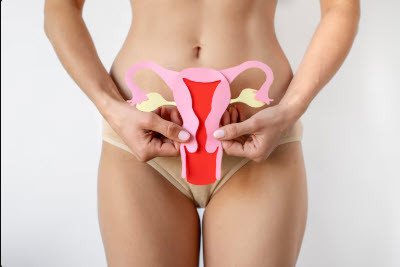Understanding Cervical Cancer
Cervical cancer develops in the cells of the cervix, the lower part of the uterus that connects to the vagina. Nearly all cases are caused by persistent infection with high-risk human papillomavirus (HPV).
Early-stage cervical cancer often presents no noticeable symptoms, which is why regular screening is vital for detection. As the cancer progresses, it may cause abnormal vaginal bleeding, such as bleeding after intercourse, between periods, or after menopause. Unusual vaginal discharge that may be watery, bloody, or foul-smelling can also occur.
Some women experience pelvic pain or discomfort during intimacy. Because these symptoms can be caused by other benign conditions, it’s important to consult a healthcare provider if you notice any persistent or unusual changes. Early diagnosis significantly improves treatment outcomes and survival rates.
Common Symptoms Summary
- Abnormal bleeding: Between periods, after sex, or after menopause
- Unusual discharge: Watery, bloody, or foul-smelling
- Pelvic pain: During intercourse or unrelated to menstrual cycle
- Advanced symptoms: Leg swelling, urinary problems, weight loss
Key Risk Factors
Primary Risk Factors
- HPV infection (especially types 16 and 18)
- Smoking (doubles risk)
- Weakened immune system
- Long-term use of oral contraceptives (5+ years)
Other Contributing Factors
- Multiple full-term pregnancies
- Family history of cervical cancer
- Exposure to DES (diethylstilbestrol) before birth
- Chlamydia infection
Prevention Strategies
HPV Vaccination
- Recommended for ages 9-26 (up to age 45 in some cases)
- Protects against cancer-causing HPV strains
- Most effective when given before sexual activity begins
Screening Tests
- Pap test: Detects precancerous cell changes (start at age 21)
- HPV test: Checks for high-risk HPV strains (typically starts at 30)
- Co-testing: Pap and HPV test together (ages 30-65 every 5 years)
Diagnostic Process
- Colposcopy (magnified examination of cervix)
- Biopsy (punch, endocervical curettage, or cone)
- Imaging tests (CT, MRI, PET) if cancer is confirmed
- Cystoscopy/proctoscopy for advanced cases
Treatment Options
Precancerous Conditions
- LEEP (loop electrosurgical excision procedure)
- Cryotherapy
- Laser therapy
- Cone biopsy
Invasive Cancer
- Surgery: Hysterectomy, trachelectomy, or pelvic exenteration
- Radiation therapy: Often combined with chemotherapy
- Chemotherapy: For advanced or recurrent cases
- Targeted therapy: Bevacizumab for advanced cases
- Immunotherapy: Pembrolizumab for recurrent/metastatic disease
Frequently Asked Questions
Q: Can you get cervical cancer if you've had the HPV vaccine?
A: The vaccine greatly reduces but doesn't eliminate risk, as it doesn't protect against all cancer-causing HPV types. Regular screening is still important.
Q: How often should you get a Pap test?
A: Current guidelines recommend every 3 years ages 21-29, then every 3-5 years ages 30-65 depending on test type and results.
Q: Is cervical cancer hereditary?
A: Most cases aren't, but some women may inherit a reduced ability to fight HPV infection. Having a mother/sister with cervical cancer slightly increases risk.
Q: Can cervical cancer develop without HPV?
A: Extremely rare - about 99% of cases are HPV-related. Non-HPV types are usually aggressive neuroendocrine tumors.
Q: Is cervical cancer curable?
A: When detected early, the 5-year survival rate is over 90%. Even advanced cases are often treatable with current therapies.
Living After Cervical Cancer
- Fertility preservation options for early-stage treatment
- Managing menopausal symptoms after treatment
- Pelvic floor therapy for surgical side effects
- Emotional support and counseling
- Long-term follow-up care
Key Takeaways
- HPV vaccination and regular screening prevent most cases
- Abnormal bleeding is the most common early symptom
- Precancerous changes are highly treatable
- Treatment options depend on cancer stage
- Early detection leads to excellent outcomes
The content of this post is provided for informational purposes only. It is essential to consult with a qualified healthcare professional before making any decisions regarding your health or wellness. The author is not a licensed medical professional, and this information should not be considered medical advice.
Tags: cervical cancer, HPV, Pap test, women's health, gynecologic cancer, cancer prevention, HPV vaccine, cancer screening
Have questions about cervical cancer prevention or personal experiences to share? Join the conversation in the comments below.
If you require any assistance with this article, please do not hesitate to Contact Us















